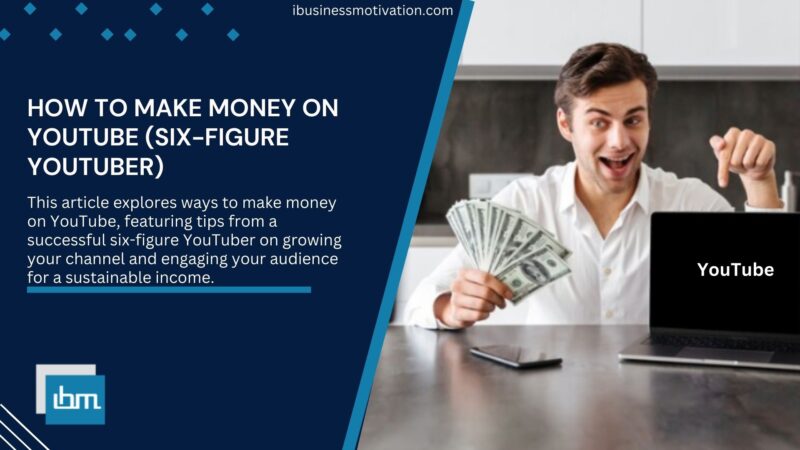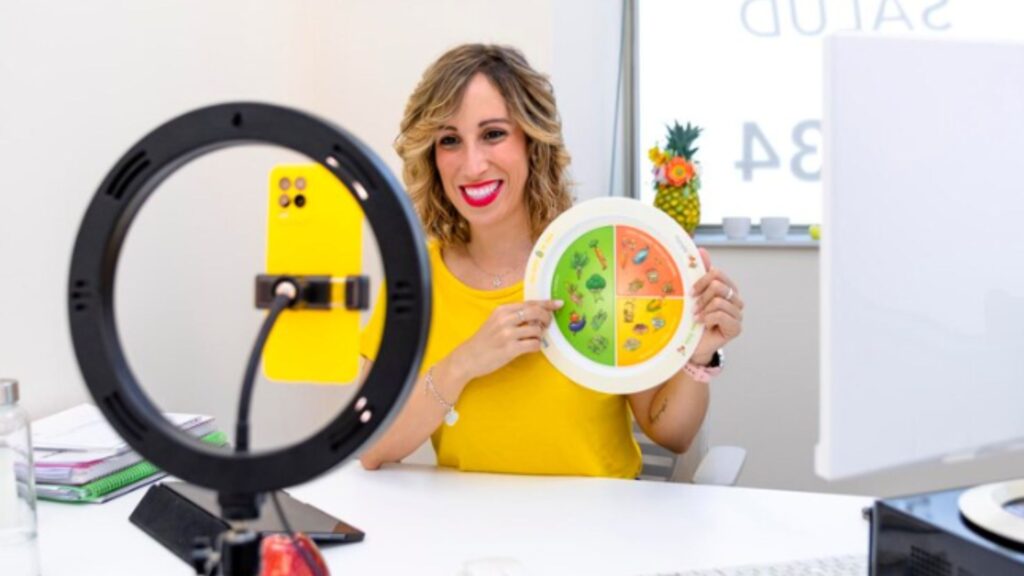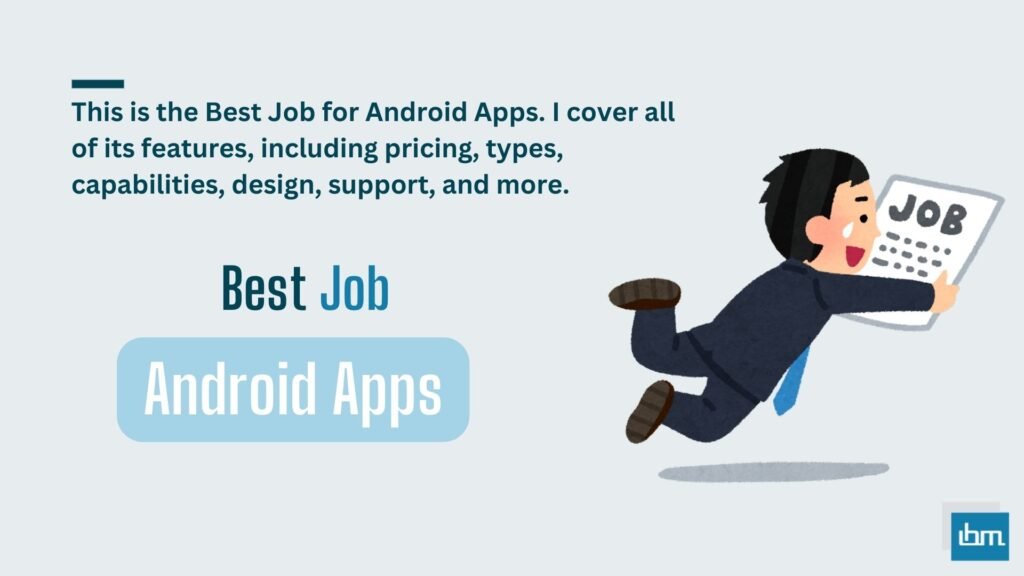Reviewed by: Jayprakash Prajapati | Last updated on October, 1, 2025
YouTube is no longer just a platform for entertainment—it’s a powerful business tool where creators can generate significant income.
If the idea of earning money on YouTube excites you, rest assured that the journey is possible, but it requires a strategy rooted in authenticity, creativity, and consistency.
This guide will explore how to make money on YouTube, drawing on case studies and experiences from six-figure YouTubers who turned their channels into thriving businesses.
Before diving into monetization methods, it’s essential to understand how YouTube works. The platform operates like a vast search engine where users search for content, and creators provide it.
The key to success lies in producing content that resonates with an audience and provides value. YouTube rewards creators whose videos consistently attract views, likes, and shares.
Gated Start…
How YouTubers Make Money?
Start by understanding what niche interests you and aligns with what audiences are searching for. Pick a category where you can offer something unique, whether through entertainment, education, or both.
1. Ad Revenue.
One of the most common ways YouTubers make money is through Google AdSense. Once you meet YouTube’s Partner Program requirements (1,000 subscribers and 4,000 watch hours in the last 12 months), you can start displaying ads on your videos. But earning significant income from ads alone takes time and high viewership.
Diversify your content with longer videos (10+ minutes) to increase ad opportunities, without compromising value. High-quality content brings viewers back, and consistency will grow your audience.
2. Affiliate Marketing.
Affiliate marketing can quickly turn into a major source of income. This involves recommending products or services in your videos and including affiliate links in your description. When viewers purchase through those links, you earn a commission.
A YouTuber who reviews tech gadgets might include affiliate links to Amazon products. Even with a moderate following, affiliate commissions can add up quickly if their audience trusts their recommendations.
Only promote products you genuinely believe in. Your audience can tell if you’re being authentic, and trust is essential for long-term success.
3. Sponsored Content.

Brands are eager to collaborate with creators who have loyal audiences. If your channel focuses on a specific niche (like fitness, gaming, or fashion), you can partner with brands that want exposure to your audience. The best part? Sponsored videos often pay far more than ad revenue.
A fitness YouTuber with a dedicated audience may work with supplement brands, gym equipment manufacturers, or fitness apparel companies. For each sponsored video, they earn a flat fee based on their subscriber count and average views.
Build a media kit outlining your channel’s metrics (like subscribers, average views, and engagement rates). Present this kit to brands you believe would resonate with your audience.
4. Merchandising.

Selling your own merchandise is another excellent way to generate income. This could range from custom T-shirts to digital products like e-books or courses. Merchandise is particularly effective when you’ve developed a personal brand and fostered a community that resonates with your content.
Consider creating merch that aligns with your channel’s content and audience. A gaming YouTuber might sell themed clothing, while a wellness YouTuber could offer self-care journals or e-books.
5. YouTube Premium Revenue.
YouTube Premium allows subscribers to watch videos ad-free, while still compensating creators. If your content is popular with Premium users, you’ll receive a portion of the subscription fee based on how much they watch your videos.
Produce high-quality, worthy content. The more time users spend watching your videos, the more you’ll earn through YouTube Premium revenue.
6. Fan Funding.
Many creators offer fans the option to directly support their work through platforms like Patreon, YouTube’s “Join” button, or “Super Chats” during live streams. These options allow your most dedicated viewers to contribute financially in exchange for exclusive content, shoutouts, or early access to videos.
A music YouTuber could offer Patreon supporters access to behind-the-scenes footage or early access to new songs. Even if only a small percentage of your audience participates, fan funding can provide a steady income stream.
Be transparent with your audience. Let them know how their contributions help improve your content and what special benefits they’ll receive.
7. Licensing Your Content.
If your videos feature high-quality content that’s in demand, other media companies might want to license it for use in commercials, websites, or even television. This can be a less-known but lucrative way to monetize your work.
A filmmaker who creates stunning time-lapse videos could license their footage to a travel company. By doing so, they earn a fee every time the company uses their footage.
Protect your content legally by ensuring you retain the rights to it. Work with a licensing agency if necessary, and create a portfolio showcasing your best work.
SEO Optimization: The Foundation for YouTube Success.
Optimizing your videos for search is essential to getting noticed. Focus on long-tail keywords that are relevant to your niche. These are specific keyword phrases that cater to what your audience is searching for, which makes them easier to rank for in YouTube search.
Include your main keyword in the video title, description, and tags. This tells YouTube what your video is about and helps you rank in search results.
A creator who focuses on DIY crafts may use long-tail keywords like “how to make DIY candles at home” rather than simply “DIY crafts.” This increases the chances of their video showing up when users search for candle-making tutorials.
Thumbnail and Titles: The Power of First Impressions.
Your video thumbnail and title are the first things a viewer sees. Make sure they are engaging, visually appealing, and provide a clear idea of what the video is about. A well-designed thumbnail can significantly boost your click-through rate (CTR), while a strong title helps with search engine optimization.
Include emotionally resonant words in your title that spark curiosity or excitement. Words like “easy,” “secret,” or “life-changing” tend to perform well.
Building a Loyal Audience: The Key to Long-Term Success.
Growing an engaged audience takes time, but the payoff is well worth the effort. A loyal audience doesn’t just watch your videos—they interact with them through comments, likes, and shares. These are the people who will buy your merch, use your affiliate links, and even contribute to fan funding.
Be consistent with your upload schedule. Viewers appreciate knowing when to expect new content, and consistency helps build trust.
A gaming YouTuber might post videos every Tuesday and Thursday, creating a routine that their audience follows.
Engage with Your Community.

Don’t just post videos—interact with your audience. Respond to comments, ask for feedback, and make your viewers feel like they’re a part of your journey. This not only builds a strong community but also improves your channel’s engagement metrics, which YouTube’s algorithm favors.
Create a call-to-action in your videos asking viewers to leave a comment with their thoughts or suggestions. This small gesture goes a long way in creating a dialogue between you and your audience.
Making money on YouTube isn’t an overnight process, but with patience, hard work, and a clear strategy, it’s entirely achievable. Whether you’re pursuing ad revenue, affiliate marketing, or sponsored content, remember that authenticity and value are what matter most. Always prioritize your audience, build a community, and keep refining your craft.
By focusing on these strategies, you can create a sustainable income stream on YouTube while doing something you love. The road to success is filled with learning, so embrace the journey, and don’t be afraid to experiment.
1. Introduction: The YouTube Goldmine.
Hook – Starting a YouTube channel is one of the most lucrative paths to financial freedom, but it’s not a get-rich-quick scheme. From tech enthusiasts to lifestyle influencers and financial experts, YouTube has opened doors for everyone to monetize their content.
Let’s explore actionable steps, real case studies, and tips directly from six-figure YouTubers who have cracked the code on how to earn money on this platform.
Emphasizing the journey – Whether you’re just starting or already have a growing channel, there are strategies that can fast-track your success.
2. Understanding YouTube’s Monetization System.
To make money on YouTube, the first step is understanding how its monetization system works.
The Basics of YouTube Partner Program (YPP)
To be eligible for monetization:
- You need 1,000 subscribers.
- 4,000 watch hours in the last 12 months.
- AdSense account linked to your channel.
These are the foundational numbers, but YouTube monetization goes beyond just meeting these benchmarks. Understanding engagement and how YouTube values watch time, video quality, and audience retention will put you ahead of others.
3. Creating Content That People Want to Watch.
Now that you know how to qualify for monetization, let’s discuss content creation.
Picking a niche can make or break your channel. Six-figure YouTubers like Graham Stephan (finance) or Marques Brownlee (tech) succeeded because they catered to specific audiences with clear interests. Ask yourself:
- What are you passionate about?
- What value can you provide to viewers?
- Which niches are currently underserved?
Trend Spotting & Content Evolution.
Success on YouTube is not just about jumping on trends. Instead, it’s about evolving with the platform. Keep an eye on YouTube trends like YouTube Shorts or live streaming. Channels that jump into these early usually reap rewards.
4. Building an Engaged Community (Not Just Viewers).
Successful YouTubers build a community, not just a viewer base. And engagement is the key. Focus on interacting with viewers, encouraging comments, and responding.
Watch-time is one of the most important metrics on YouTube. Longer engagement means more ads, and more ads equal higher revenue. Successful YouTubers such as Emma Chamberlain (lifestyle) have excelled because they engage with their audience authentically. Always encourage viewers to comment, share, and like your content.
Look at how channels like “Unbox Therapy” (tech) went from zero to millions of subscribers by fostering viewer interaction through giveaways, interactive polls, and personalized responses. The key to their success? Making the audience feel involved.
5. Diversifying Your Income Streams.
While YouTube ad revenue can bring in consistent earnings, it shouldn’t be your only source of income. Top YouTubers diversify their revenue streams.
Once your channel gains traction, brands will want to sponsor your videos. This is where your niche matters again. Niche channels often attract high-quality sponsorships because they target a specific audience. For example, tech YouTubers might be approached by companies like Razer or Sony, while beauty vloggers might work with Sephora or L’Oréal.
A powerful way to monetize, especially for tech or review channels, is through affiliate links. You can link to products in your video description and earn commissions when viewers make purchases. Check out platforms like Amazon Associates or ShareASale.
Creating your own products or merchandise (like T-shirts or courses) is a smart way to diversify income. Digital products such as eBooks or online courses have high-profit margins, and they allow your audience to support you directly.
6. Leveraging Tools to Grow Your Channel.
You don’t have to navigate YouTube alone. Tools like TubeBuddy or VidIQ help optimize your videos for search and track your progress. Successful YouTubers use these tools to maximize their visibility.
TubeBuddy allows for keyword research and competitor analysis, giving you an advantage in SEO. VidIQ helps you track metrics, see what’s working, and suggests the best times to upload content.
Both these tools offer features that boost engagement and help identify trending topics in your niche, crucial for maximizing your earnings.
7. The Role of SEO in YouTube Success.
Just like a website, YouTube videos require strong SEO to be discovered. Use long-tail keywords in your titles, descriptions, and tags.
Your video title should include your main keyword and also be engaging enough to entice clicks. For example, instead of “How to Make Money Online,” you could title it, “14 Proven Ways to Make Money on YouTube in 2025.”
Don’t overlook the power of a custom thumbnail. Create a compelling image that grabs attention and complements the video title. Remember to include text that teases the content, like “Free Strategy Inside!” This increases the click-through rate and helps your video get seen.
8. Avoiding Copyright and Legal Pitfalls.
It’s tempting to use copyrighted music or visuals to spice up your videos, but this can lead to strikes against your channel.
Always use royalty-free music or visuals from platforms like Epidemic Sound or Pexels. This avoids issues with monetization or, worse, having your content removed.
Consider a YouTuber like “MrWhoseTheBoss” (tech). He carefully uses only licensed images and sounds, avoiding any takedowns. Following copyright rules is vital for staying monetized in the long term.
9. Engagement Metrics You Should Watch.
Watch Time: One of the most critical factors. YouTube promotes videos with high watch time, which means you need to keep viewers engaged for as long as possible.
Click-Through Rate (CTR): This measures how many people click on your video after seeing the thumbnail. Optimize your thumbnails and titles to improve your CTR. Subscriber Growth: A steady increase in subscribers indicates that your content is resonating with the audience.
FAQs About Making Money on YouTube.
Earnings from ads vary widely. On average, YouTubers earn about $3-$5 per 1,000 views, depending on the niche, audience location, and advertiser demand.
No. You can start with just a smartphone and basic editing software. As you grow, you can invest in better equipment like cameras and microphones.
This depends on your growth strategy and consistency. Many YouTubers take a year or more before they start seeing significant earnings. However, focusing on high-quality content and engagement can fast-track your success.
It varies depending on your niche, consistency, and content quality. Some creators start making money within months, while others take a year or more. The key is consistency and audience engagement.
Some creators start making money within months, while others take a year or more. The key is consistency and audience engagement.
No, you don’t need millions of subscribers. Many creators with smaller, highly engaged audiences earn substantial income through affiliate marketing, sponsored content, and fan funding.
Videos that provide value to viewers, whether through entertainment or education, tend to perform best. High-paying niches include tech reviews, finance, fitness, and personal development.
Consistency is key. Whether it’s once a week or three times a week, stick to a schedule so your audience knows when to expect new content. Quality always trumps quantity, so don’t sacrifice video quality just to post more often.
Conclusion.
Making money on YouTube isn’t easy, but with the right strategy, dedication, and a strong connection with your audience, it can be one of the most rewarding careers. Follow these actionable steps, stay consistent, and remember to enjoy the journey. Your audience will see your authenticity, and that’s what keeps them coming back.
Making money on YouTube goes beyond creating videos—it’s about creating genuine connections. Every successful six-figure YouTuber started small, navigating uncertainty, refining their content, and finding what resonates with their audience. The key to reaching this level of success is a combination of consistency, passion, and the ability to truly connect with your viewers.
One of the most crucial takeaways is that YouTube is more than just a platform for earning revenue—it’s a place to build relationships. When viewers feel an emotional connection to your content, they become loyal supporters. It’s not just about the videos you post; it’s about the conversations you create, the community you build, and the authenticity you share. Whether you’re replying to comments or sharing personal experiences, be yourself—it’s the best strategy for building long-term trust with your audience.
Focus on long-term growth rather than quick wins. Many creators make the mistake of chasing viral trends, but true success comes from providing consistent value. Stay dedicated, experiment with new types of content, and adapt to YouTube’s ever-evolving features. This long-term commitment will lead to sustained revenue growth over time.
As the platform grows, so should your approach. Don’t be afraid to embrace new features like YouTube Shorts, live streaming, or collaborations. Six-figure YouTubers keep evolving without losing the core of their content. Staying flexible will help you adapt and thrive, no matter how the platform changes.
Finally, stay persistent. Growing a channel takes time and patience, but with hard work, human connection, and a focus on delivering value, you’ll see the rewards. You don’t need instant results—what you need is the dedication to improve with every video and a commitment to your audience.
Further reading on IBusinessMotivation.com: Interested in adding a personal touch to your YouTube posts?
Best YouTube Thumbnail Ideas. In the ever-expanding universe of YouTube, where millions of videos compete for attention.
Best Affordable YouTube SEO tools For small Creators, handpicked by a 10-figure YouTuber to help you skyrocket your channel’s visibility and growth.




